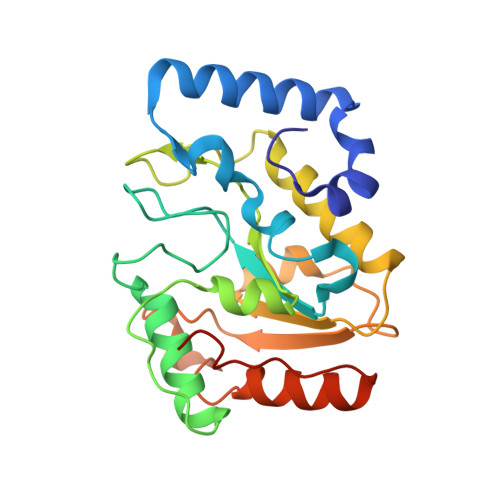Using structural-based protein engineering to modulate the differential inhibition effects of SAUGI on human and HSV uracil DNA glycosylase.
Wang, H.C., Ho, C.H., Chou, C.C., Ko, T.P., Huang, M.F., Hsu, K.C., Wang, A.H.(2016) Nucleic Acids Res 44: 4440-4449
- PubMed: 26980279
- DOI: https://doi.org/10.1093/nar/gkw185
- Primary Citation of Related Structures:
5AYR, 5AYS - PubMed Abstract:
Uracil-DNA glycosylases (UDGs) are highly conserved proteins that can be found in a wide range of organisms, and are involved in the DNA repair and host defense systems. UDG activity is controlled by various cellular factors, including the uracil-DNA glycosylase inhibitors, which are DNA mimic proteins that prevent the DNA binding sites of UDGs from interacting with their DNA substrate. To date, only three uracil-DNA glycosylase inhibitors, phage UGI, p56, and Staphylococcus aureus SAUGI, have been determined. We show here that SAUGI has differential inhibitory effects on UDGs from human, bacteria, Herpes simplex virus (HSV; human herpesvirus 1) and Epstein-Barr virus (EBV; human herpesvirus 4). Newly determined crystal structures of SAUGI/human UDG and a SAUGI/HSVUDG complex were used to explain the differential binding activities of SAUGI on these two UDGs. Structural-based protein engineering was further used to modulate the inhibitory ability of SAUGI on human UDG and HSVUDG. The results of this work extend our understanding of DNA mimics as well as potentially opening the way for novel therapeutic applications for this kind of protein.
Organizational Affiliation:
Graduate Institute of Translational Medicine, College of Medical Science and Technology, Taipei Medical University, Taipei 110, Taiwan.
















